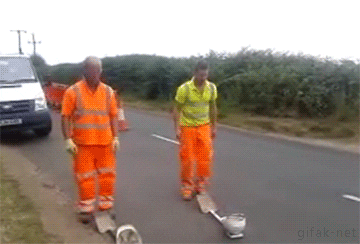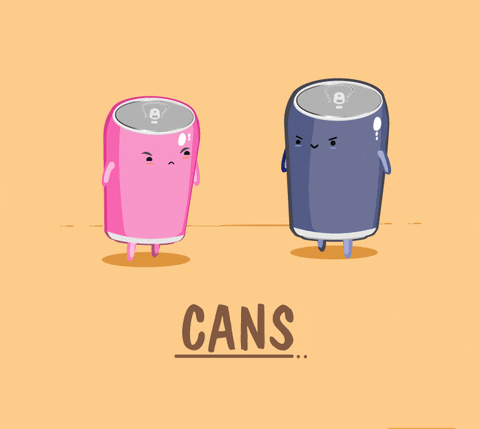- The Scarlet Letter
- Posts
- Ramp Up Baby
Ramp Up Baby
Highways, High Tariffs, and Harder To Get High

Are you interested in sponsoring the best local newsletter on the planet? Reply to this email to help your organization reach hundreds of thousands of engaged Columbusites.
Top of Mind
“I/70 and I/71” Welcome to the Orange Barrel Capital
Columbus, a city where highway construction is a lifestyle, not a project. If you've driven anywhere near downtown in the last fourteen years, congratulations, you’ve been part of the audience for The Downtown Ramp Up, a $1.4 billion infrastructure renovation that started when Barack Obama was in his first term.
And now, ODOT (Ohio Department Of Transportation) has confirmed the timeline is stretching even further into the 2030s. That’s right drivers who were born the year this project began will still be navigating detours when they get their licenses.
So, what exactly is being done, other than ensuring Columbus drivers live in a permanent state of confusion?

A Project So Big It’s Outlasting Multiple Generations of Cars
ODOT’s Downtown Ramp Up is a multi-phase, decade-spanning epic that aims to:
✅ Reduce the absurd number of ramps feeding into I-70/I-71 from 19 to 13 (because why have 19 when you can still have an unreasonable 13?)
✅ Add more lanes to decrease congestion (good luck convincing Columbus drivers to actually use them correctly)
✅ Rebuild half the bridges in the city, ensuring pedestrians also get to experience construction purgatory.
Some key highlights of this never-ending odyssey:
Phase 1 finished in 2014 (a simpler time).
Phase 2 started in 2013 and is still ongoing. It includes revamping the I-70/I-71 interchange downtown. The final piece, Phase 2D, hasn’t even started yet and won’t break ground until after 2026.
Phase 4 is the big one currently in progress, featuring detours, closed bridges, and general frustration across the Brewery District and German Village. Completion? “Sometime after 2030.”
Phase 5 & 6 are still in the design stage and won’t even begin construction until 2035, meaning this project could theoretically outlive some of its original engineers.
But don’t worry, ODOT says this will all be worth it once it's done.

Why Is This Taking So Long?
Simple: Columbus is trying to rebuild its entire downtown highway system while still letting people use it. Imagine remodeling your kitchen without stopping cooking—and instead of a kitchen, it’s 150,000 cars a day hurtling toward each other at 70 mph.
Plus, funding trickles in from various sources, which means every new phase depends on when (or if) the state gets more money. And, let’s be honest, construction delays in Columbus are about as surprising as a snowstorm in April.
What’s Next? (Besides More Detours, Obviously)
If you thought this was all wrapping up soon, bless your optimistic soul. The next major disruptions will include:
🚧 Ongoing lane closures through 2025-26 around Mound, Fulton, and Front Streets.
🚧 Bridge work that may or may not actually finish when promised.
🚧 West Side and SR-315 improvements that are in the “future planning” stage, aka “Don’t even think about seeing them done before the 2040s.”
And for anyone hoping to drive into downtown without white-knuckling the wheel, just remember: Columbus has been dealing with construction since the day you first learned how to drive, and it’s likely still going to be happening when your kids start asking for the car keys.
So sit back, merge cautiously, and accept that, in Columbus, the traffic cones are forever.
Scarlet Letter Trivia
Question: What year was the first section of 71 Completed and open to drive on?
A) 1942
B) 1960
C) 1854
D) 1969
Girl Scout Cookies Just One Click Away
Get ready, cookie lovers—your favorite season has arrived! Girl Scout Cookies are officially here, and that means it’s time to load up on Thin Mints, Tagalongs, Samoas, and all the irresistible classics you wait for all year. Whether you're a die-hard Do-si-dos fan or can’t resist the magic of a fresh box of Lemonades, there’s a flavor (or five) calling your name.
But these cookies aren’t just a treat—they’re a force for good. Every box you buy supports the next generation of Girl Scouts, funding their adventures, education, and leadership training. It’s a sweet deal: you get the cookies, they get the skills to change the world.
Ohio’s Marijuana Millions: The Sequel—Now With Even More Government Overreach
Just when you thought Ohio’s marijuana industry was settling in, lawmakers are back at it—because apparently, voter-approved laws are just suggestions. Senate Bill 56 is the latest attempt to roll back key parts of the state’s recreational cannabis program, and if you thought the tax shenanigans were bad, wait until you see what’s next. New Rules, More Restrictions Sen. Steve Huffman (R-Tipp City) has introduced a bill that would fundamentally reshape Ohio’s cannabis market and spoiler alert: it’s not to make things easier. Here’s what’s on the chopping block:
Fewer Dispensaries: The state would cap the number at 350 (currently, 128 are open, with more on the way). So much for that “free market” thing.
Home Grow Limits Cut in Half: The legal limit would drop from 12 plants to 6, because what’s the point of personal freedom if the government isn’t micromanaging your houseplants?
Lower THC Limits: Products would be capped at 70% THC, down from 90%. Translation? Weaker products, higher prices, and more incentive to shop across the Michigan border.
No Public Use—Like, At All: It’s already illegal to smoke in public, but this bill reinforces that cannabis use is only allowed in private residences. Good luck if your landlord isn’t on board.
Eliminating Social Equity Programs: The initiative designed to help those harmed by past drug laws? Gone. Because nothing says “justice” like making sure the same people who were punished for marijuana don’t get a shot in the legal industry.
No Unemployment for Cannabis Users: If you’re fired for marijuana use—even in a state where it’s legal—you cannot collect unemployment. Because punishing people for not being drunk at work just makes sense, right?

Im not crying you’re crying
Lawmakers are once again rewriting the rules in a way that benefits the state over local communities. Sound familiar? It should, just last month, Gov. Mike DeWine and Senate Republicans tried to strip cities of their share of marijuana tax revenue and redirect the funds into their own pet projects.
Now, instead of allowing the cannabis industry to grow (pun intended), they’re making it less competitive, less accessible, and less profitable—which could drive consumers straight back to the black market or out-of-state dispensaries.
Opponents of the bill, including dispensary owners and former law enforcement officers, argue that these restrictions do nothing for safety but plenty to stunt Ohio’s cannabis industry before it even hits its stride.
Ohio Reports First Human Bird Flu Case, But Risk Remains Low
The bill is still in committee, but if history is any indication, Ohio lawmakers won’t stop until they’ve watered down recreational marijuana so much that it barely resembles what voters actually passed.
So, will Senate Bill 56 pass? Will local governments fight back? Or will Ohio’s marijuana industry be yet another casualty of the state’s long history of political overreach?
Stay tuned, because the only thing moving faster than Ohio’s cannabis sales is the state’s effort to make sure you get less of it.
Tariffs, Craft Beer, and the Rising Cost of a Cold One
If you think Columbus road construction is frustrating, just wait until you hear what’s happening to your beer.
Craft breweries across Ohio are bracing for impact as new tariffs on aluminum and steel threaten to drive up costs, tighten margins, and—worst of all—raise the price of your favorite local pint.
How We Got Here
President Trump’s latest round of tariffs slaps a 25% tax on imported aluminum and steel, key materials used by breweries for cans and kegs. While this might sound like a problem for big manufacturers, Ohio’s craft beer industry—home to over 400 breweries—is staring down a major financial headache.
Right now, 75% of all craft beer is packaged in cans. And those cans? They’re about to get more expensive.
What It Means for Breweries (And Your Wallet)
Bob Szuter, owner of Wolf’s Ridge Brewing, knows exactly what this means: higher prices, thinner margins, and tough decisions. His brewery cans about 60% of its beer, and a 25% tariff means an extra 2.5 to 3 cents per can. Doesn’t sound like much? Let’s do the math:
📦 One pallet of cans = 8,169 cans
💰 Before tariffs: $1,062 per pallet
💸 After tariffs: Up to $1,307 per pallet
That’s an extra $245 per pallet—before a single drop of beer is even brewed. And that cost isn’t going to magically disappear.
So where does that extra money come from?
✔️ Higher prices at the taproom
✔️ More expensive six-packs at the store
✔️ Less ability to invest in new equipment, jobs, or expansion
In an industry already hit by inflation, supply chain issues, and shifting drinking habits, breweries don’t have much wiggle room.Trivia Answer:
Not Every Brewery Can Adapt
Some larger breweries—like BrewDog or Great Lakes Brewing Co.—can afford to stockpile cans or shift to glass bottles. But for smaller and mid-sized breweries like Seventh Son or Wolf’s Ridge, changing their canning setup would require a new machine costing $50,000 to $100,000. That’s money most small breweries simply don’t have.
And don’t even think about plastic beer bottles. That’s a bridge too far for craft drinkers.
Beer Closures on the Horizon?
Margins are already razor-thin in the brewery world. With increasing competition, inflation, and now tariffs driving up costs, some industry leaders worry that more closures are inevitable.
“I do think there’s going to be some more closures coming down the pipeline,” said Collin Castore of Seventh Son.
The last time Trump imposed tariffs on steel and aluminum in 2018, domestic aluminum prices jumped as well—meaning breweries weren’t just paying extra on imports, but on American-made cans too. That history doesn’t exactly inspire confidence.
What You Can Do
It’s simple: Support your local breweries.
The best way to help small brewers weather this storm? Keep buying their beer. More than ever, your favorite taproom will rely on loyal customers to keep things afloat.
So next time you stop in for a pint, just remember—there’s a lot more than hops and malt in that glass. There’s a whole industry fighting to survive.
And thanks to tariffs, the price of a cold one is only going up from here./
B) 1960: You could drive Between Park Road and Strimple Avenue and this little chunk of highway cost $2,949,951!

We got this!





